Understanding Cut-Resistant Gloves: Levels, Uses, and Benefits
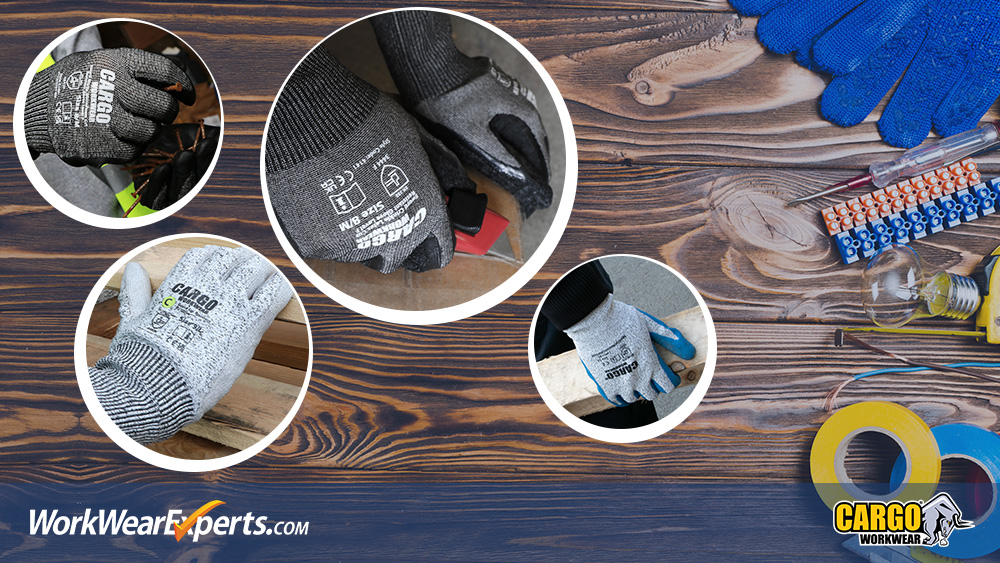
In many industries, protecting workers' hands from cuts and abrasions is a top priority, as hands are one of the most vulnerable parts of the body. Cut-resistant gloves provide essential protection, reducing the risk of injuries from sharp tools, machinery, or materials. These gloves are designed to prevent cuts by incorporating strong, durable materials that can withstand high levels of force and friction.
Cut-resistant gloves come in various protection levels, each suited to different tasks and risk factors. Understanding cut levels, the materials used in these gloves—such as Kevlar, HPPE (high-performance polyethylene), and steel fibres—and the safety standards like EN 388 can help employers choose the right gloves for each job.
In this guide, we’ll explore the different levels, uses, and benefits of cut-resistant gloves and why they’re essential in creating a safer workplace.
TABLE OF CONTENTS
- What are Cut-Resistant Gloves?
- Understanding Cut Levels: What Do They Mean?
- Safety Standards for Cut-Resistant Gloves
- Selecting the Right Cut Level for Your Job
- Benefits of Using Cut-Resistant Gloves
- Industries that Rely on Cut-Resistant Gloves
What are Cut-Resistant Gloves?
Cut-resistant gloves are essential safety gear designed to shield hands from cuts, abrasions, and punctures, commonly encountered in high-risk jobs. These gloves achieve their protective qualities through specialised materials that resist the force of sharp objects, making them ideal for tasks involving blades, glass, metal, and other potentially hazardous items.
The primary materials used in cut-resistant gloves include:
- HPPE (High-Performance Polyethylene): Lightweight and highly durable, HPPE provides excellent cut resistance without sacrificing dexterity or comfort, making it perfect for tasks that require precision.
- TAEKI: Known for its advanced cut-resistant fibres, TAEKI offers high levels of protection, flexibility, and comfort, making it suitable for prolonged wear in demanding environments.
- Chainmail: Often used in applications requiring the highest cut resistance, such as meat processing or glass handling, chainmail gloves provide a robust barrier against sharp and abrasive materials.
These materials allow cut-resistant gloves to be tailored to specific job requirements, offering workers the necessary protection without hindering their ability to perform tasks effectively.
| Cargo Dexter Cut 5/D PU Palm Glove 4X43D Ext Cuff |
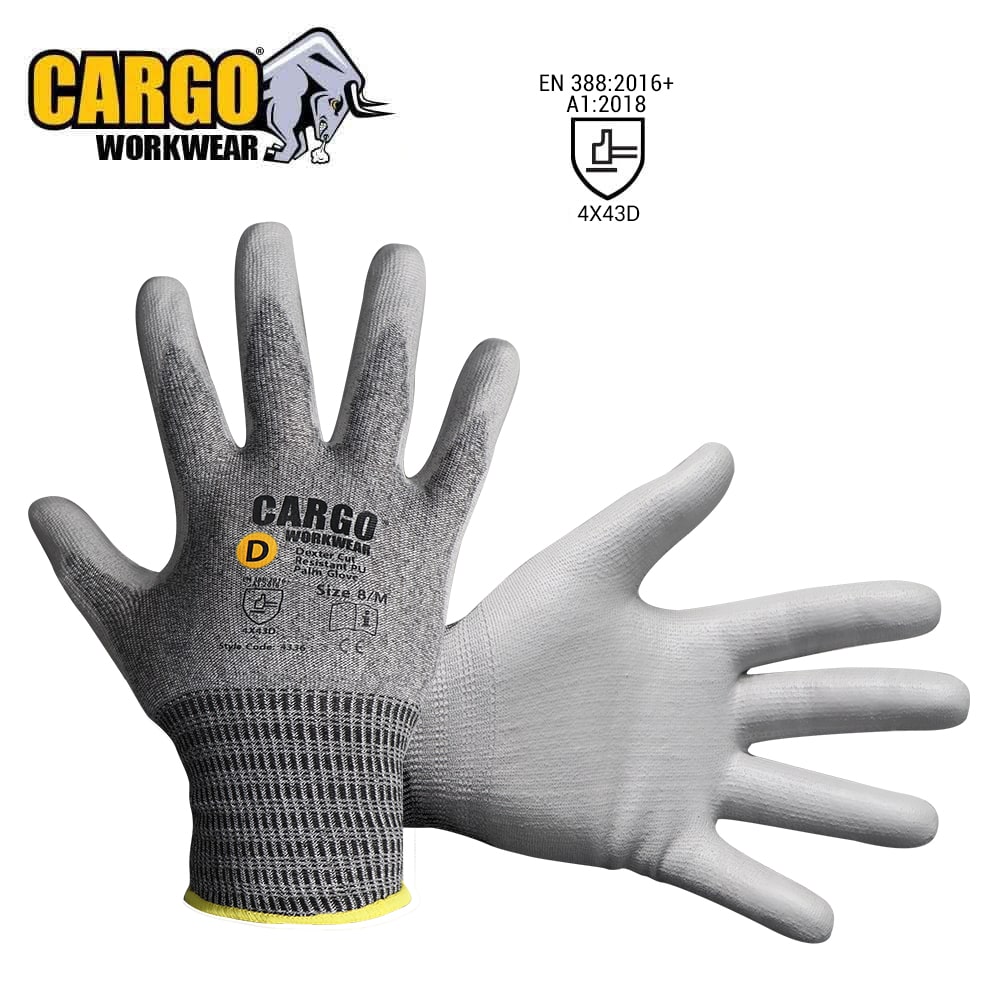 |
Understanding Cut Levels: What Do They Mean?
The cut resistance of gloves is classified according to EN 388, the European standard for protective gloves. This standard measures how well a glove can resist cuts, punctures, abrasions, and tears, with the ISO 13997 Cut Test used for determining the cut resistance level, rated from Level A to Level F.
Each level corresponds to the amount of force, measured in Newtons (N), required to cut through the glove material using a straight-edged blade. Here's a detailed breakdown:
- Level A: Protects against very low cut risks, requiring a force of 2 to 5 Newtons. Suitable for tasks like general maintenance or light handling.
- Level B: Offers slightly higher protection, requiring 5 to 10 Newtons. Ideal for basic assembly work or light-duty cutting tasks.
- Level C: Provides medium-level cut resistance, requiring 10 to 15 Newtons. Often used in tasks like handling lightweight metals or plastics.
- Level D: Designed for higher cut risks, requiring 15 to 22 Newtons. Common in industries such as metalworking and construction.
- Level E: Provides very high protection, requiring 22 to 30 Newtons. Suitable for handling sharp glass or heavy-duty materials.
- Level F: The maximum cut resistance level, requiring a force of 30+ Newtons. Used in extreme applications, such as meat processing or glass manufacturing.
The ISO 13997 test complements the traditional Coup Test, providing more accurate results for materials that dull the blade. By understanding these cut levels, you can choose gloves that meet the specific safety requirements of your work environment, ensuring optimal protection and performance.
| Cargo Magna Cut 5/D Latex Crinkle Palm Glove 4X44D Ext Cuff |
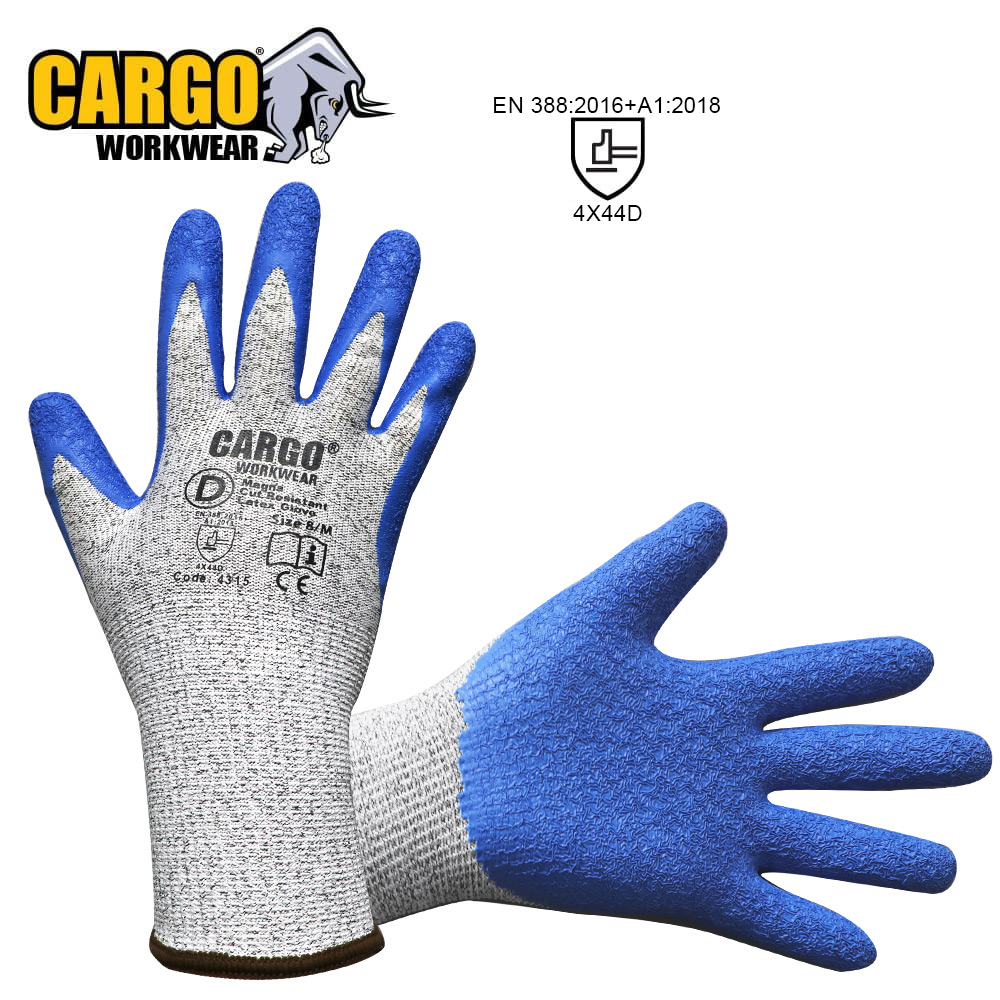 |
Safety Standards for Cut-Resistant Gloves
EN 388 is the key European standard for protective gloves, assessing their ability to withstand mechanical risks such as cuts, abrasions, tears, and punctures. Gloves certified under EN 388 undergo comprehensive testing to meet strict safety criteria, making them suitable for a variety of high-risk applications.
The standard evaluates gloves based on the following criteria, with performance indicated on the glove label:
- Abrasion Resistance: Rated from 1 to 4, this measures the glove’s durability when exposed to repeated friction or wear.
- Cut Resistance (Coup Test): Rated from 1 to 5, this test assesses how well the glove resists cutting actions with a circular blade under controlled conditions.
- Tear Resistance: Rated from 1 to 4, this measures the glove’s ability to withstand tension without tearing.
- Puncture Resistance: Rated from 1 to 4, this evaluates how resistant the glove is to penetration by sharp objects, such as nails or needles.
ISO 13997 Test for Advanced Cut Protection
For gloves designed to handle materials that dull a circular blade or for tasks requiring higher precision, EN 388 includes the ISO 13997 Test. This test uses a straight-edged blade to measure the amount of force (in Newtons) needed to cut through the glove material. The results are represented by a cut resistance rating from A to F:
- A: Minimal cut protection (2–5 Newtons)
- B: Low cut protection (5–10 Newtons)
- C: Medium cut protection (10–15 Newtons)
- D: High cut protection (15–22 Newtons)
- E: Very high cut protection (22–30 Newtons)
- F: Maximum cut protection (30+ Newtons)
The ISO 13997 Test provides a more precise evaluation of gloves intended for tasks involving extremely sharp or high-force cutting tools.
Importance of EN 388 Ratings
These performance ratings are displayed on certified gloves, allowing users to easily identify their suitability for specific tasks. Understanding these labels ensures that workers and employers select gloves with the right level of protection for their needs, adhering to safety standards and promoting safer workplaces.
| Cargo Sword Cut 5/C PU Palm Glove 4443C Ext Cuff |
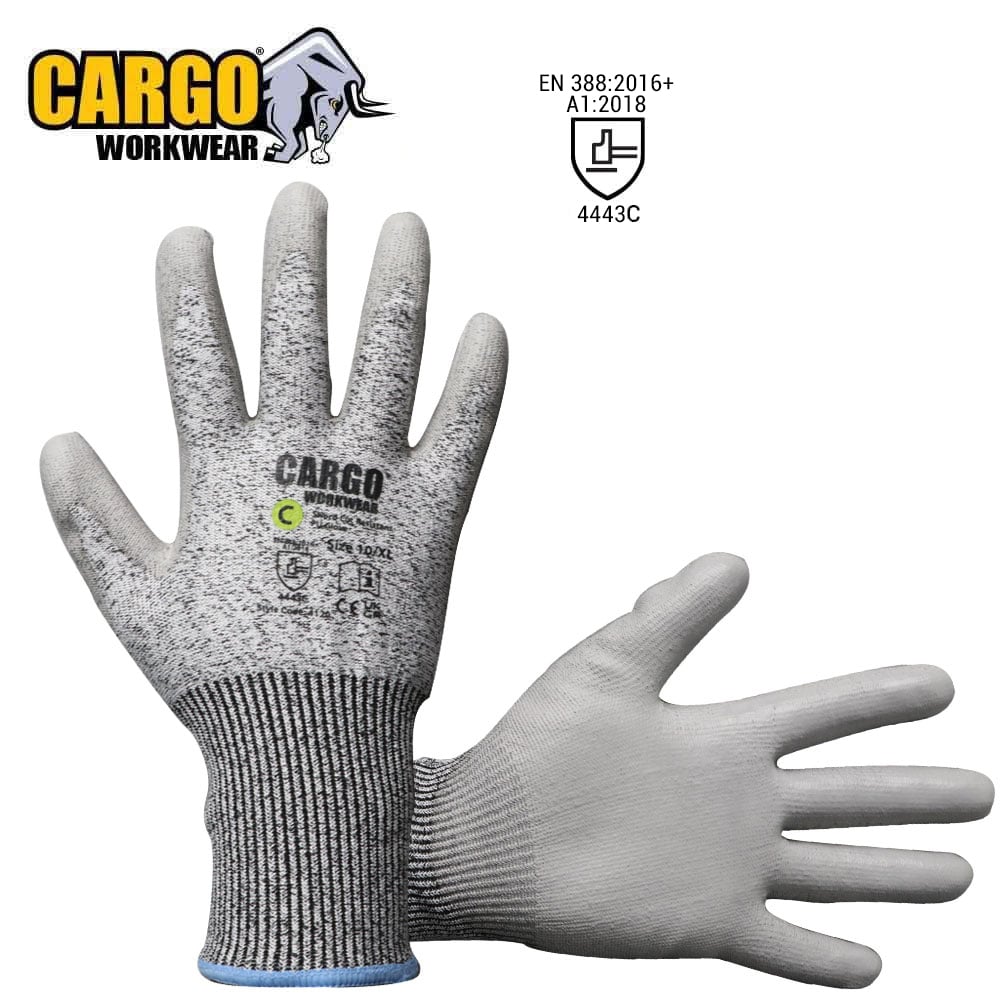 |
Learn more: Work Gloves EN Safety Standards - Full Guide
Selecting the Right Cut Level for Your Job
Choosing the appropriate cut level for your job is essential for ensuring both safety and comfort. Each cut level is designed to protect against specific hazards, making it important to match the glove’s protection rating to the risks you’ll encounter.
Guidelines for Matching Cut Levels to Job Applications
- Level A: Ideal for low-risk tasks with minimal cut hazards. Suitable for jobs like general maintenance, warehouse operations, and light assembly work where sharp edges are rare.
- Level B: Offers moderate protection, ideal for tasks with minor cut risks. Commonly used in jobs like packaging, light handling, and assembly, where occasional handling of blunt objects may occur.
- Level C: Provides mid-level cut resistance, suitable for moderate cut risks such as handling lightweight metals, plastics, or small hand tools. Often chosen for roles in construction, basic manufacturing, and maintenance work.
- Level D: Higher cut protection for handling sharper materials and rougher tasks, making it suitable for industries like metal fabrication, automotive work, and some construction applications where sharp or abrasive materials are handled frequently.
- Level E: Designed for high-risk tasks involving sharp or heavy materials. Jobs in glass handling, heavier metalwork, or recycling industries may require this level of protection to prevent cuts from sharp edges and materials.
- Level F: The maximum cut protection available, intended for extreme cut hazards in specialised industries. Tasks like glass processing, high-precision metal cutting, or meat processing with sharp blades demand Level F gloves for maximum safety.
By assessing the risks of your specific role, you can select gloves with the appropriate cut level to ensure both protection and flexibility. This targeted approach to glove selection promotes safety and enhances efficiency in high-risk work environments.
| Cargo Sword Cut 5/D Nitrile Sandy Palm Glove 4X42D Ext Cuff |
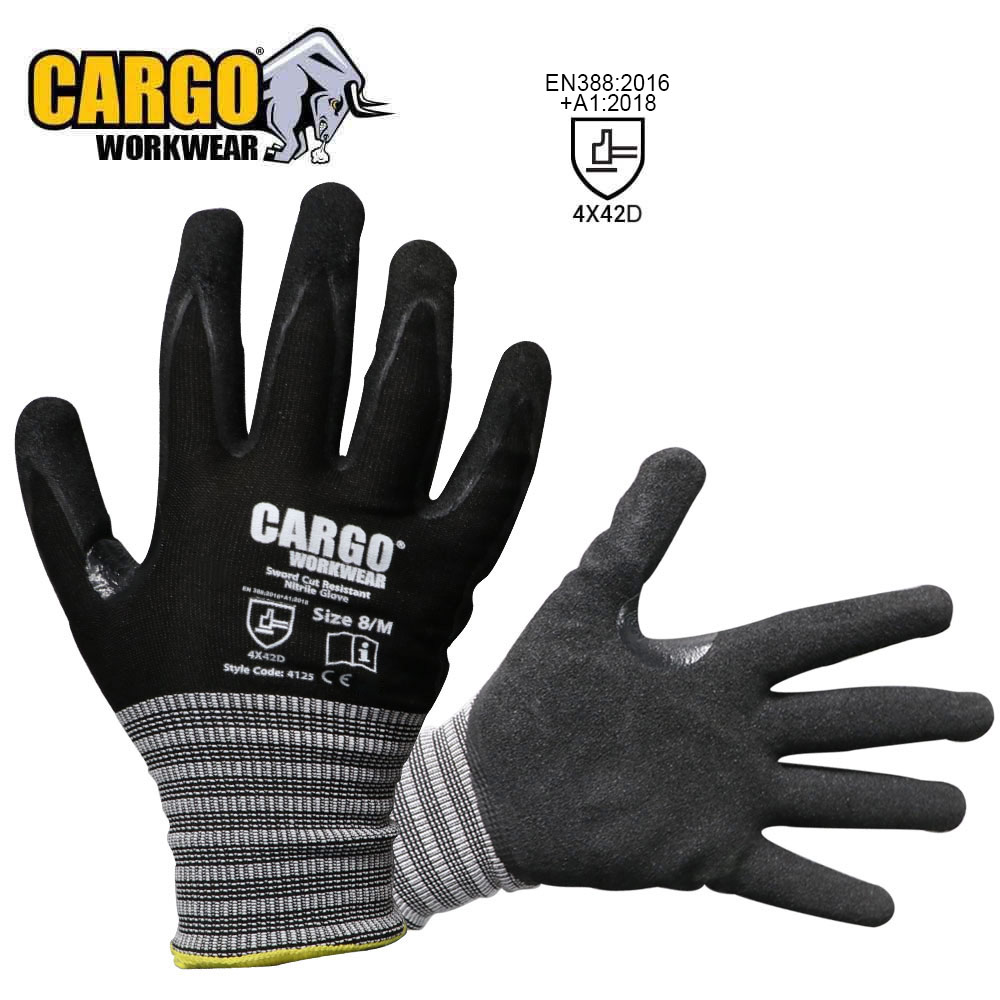 |
Benefits of Using Cut-Resistant Gloves
Cut-resistant gloves are essential in reducing the risk of hand injuries, which are common in many high-risk industries. By providing a reliable barrier against cuts, these gloves allow workers to handle sharp tools, materials, and machinery with confidence, leading to a safer and more efficient work environment. With reduced injury risks, employees can maintain focus and productivity, knowing they’re properly protected.
In addition to injury prevention, cut-resistant gloves offer several other practical benefits:
- Increased Grip: Many cut-resistant gloves are designed with textured surfaces or materials that improve grip, allowing workers to handle tools and materials securely, even in wet or oily conditions.
- Enhanced Comfort: Modern cut-resistant gloves are made with flexible and lightweight materials, providing comfort for all-day wear without sacrificing protection.
- Longer Durability: Constructed with high-performance materials, these gloves are built to withstand regular wear and tear, making them a cost-effective investment for jobs that require reliable, long-lasting protection.
Together, these benefits make cut-resistant gloves an invaluable asset in high-risk jobs, where safety, productivity, and comfort are all priorities.
| Cargo Sword Cut 5/C Latex Crinkle Palm Glove 3X42C Ext Cuff |
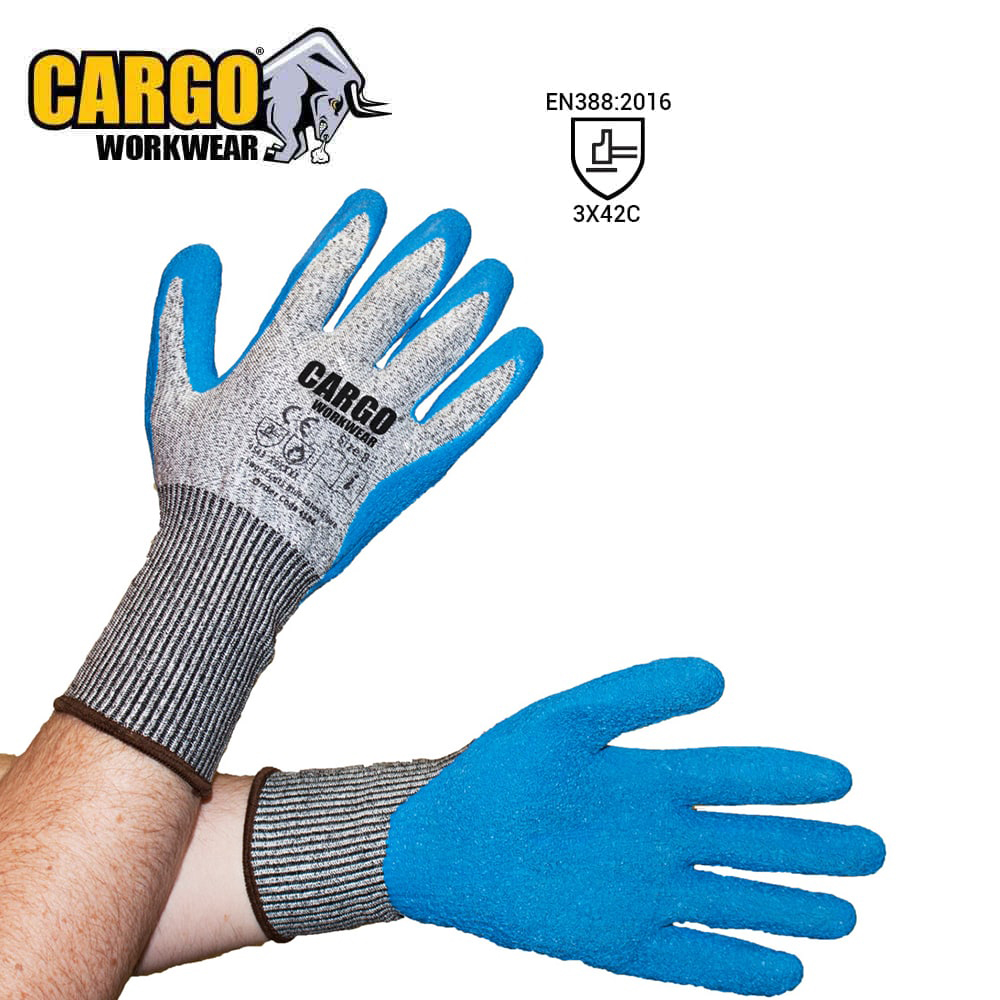 |
Industries that Rely on Cut-Resistant Gloves
Cut-resistant gloves are indispensable across various industries where hand protection from sharp or abrasive materials is critical. These gloves provide essential safety for workers in roles where they regularly encounter hazards like sharp tools, heavy machinery, and high-risk materials.
Key Industries and Tasks Benefiting from Cut Protection
- Construction: Workers in construction often handle sharp materials, such as metal, glass, and rough edges. Tasks like cutting, lifting, and installing materials benefit from gloves that prevent cuts and abrasions.
- Automotive: In automotive manufacturing and repair, mechanics and assembly line workers need protection from sharp tools, metal components, and machinery. Cut-resistant gloves provide the necessary protection during tasks like part assembly, repairs, and welding.
- Food Processing: In environments like meat and poultry processing, where sharp blades are frequently used, cut-resistant gloves help prevent injuries during slicing, deboning, and packaging tasks. Chainmail or high-level cut protection gloves are often preferred.
- Glass Handling: The glass industry requires the highest levels of cut resistance due to the risk of handling sharp, fragile materials. Gloves with advanced cut protection are essential for workers cutting, transporting, and installing glass.
- Metal Fabrication: In metalworking and sheet metal fabrication, workers face high risks from sharp edges, heavy machinery, and welding equipment. Cut-resistant gloves with enhanced puncture and abrasion resistance ensure safer handling and increased productivity.
These industries rely on cut-resistant gloves to not only prevent injuries but also improve worker confidence and productivity. By providing reliable protection, these gloves support safer, more efficient operations across a wide range of high-risk tasks.
| Cargo Sword Cut/F Latex Crinkle Glove 3444F Ext Cuff |
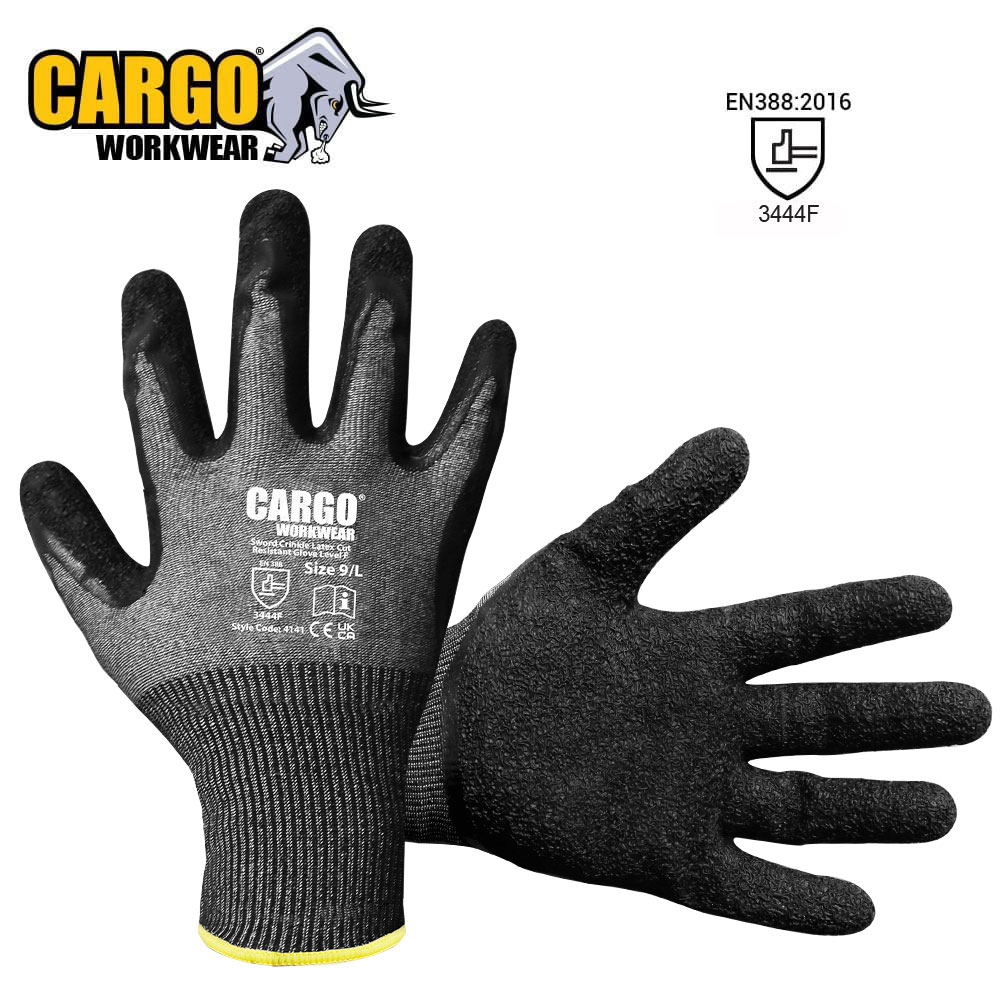 |
Conclusion
Cut-resistant gloves are an essential part of workplace safety, offering critical protection, comfort, and durability in high-risk environments. By understanding cut levels, materials, and safety standards, you can select gloves that match the unique demands of your job, ensuring both safety and productivity.
Ready to enhance safety for yourself or your team? Explore our range of cut-resistant gloves at WorkWear Experts and find the right level of protection tailored to your industry’s needs.
Your email address cannot be published. Required fields are marked*
